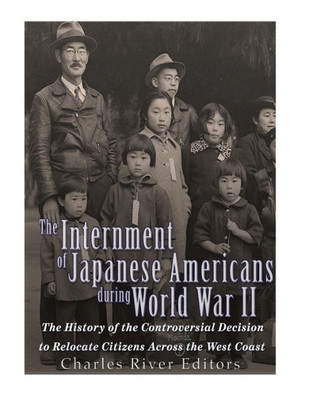*Includes pictures *Includes accounts of camp life written by internees *Includes online resources and a bibliography for further reading *Includes a table of contents "The truth is-as this deplorable experience proves-that constitutions and laws are not sufficient of themselves...Despite the unequivocal language of the Constitution of the United States that the writ of habeas corpus shall not be suspended, and despite the Fifth Amendment's command that no person shall be deprived of life, liberty or property without due process of law, both of these constitutional safeguards were denied by military action under Executive Order 9066." - Supreme Court Justice Tom C. Clark "I don't want any of them here. They are a dangerous element. There is no way to determine their loyalty... It makes no difference whether he is an American citizen, he is still a Japanese. American citizenship does not necessarily determine loyalty... But we must worry about the Japanese all the time until he is wiped off the map." - General John L. DeWitt, head of the Western Command Even before Congress declared war on Japan the day after Pearl Harbor, the implications for people of Japanese ancestry living in the United States had begun. On December 7th, several hundred Issei, or first-generation Japanese immigrants, were arrested in Hawaii and on the mainland, having been earlier identified by the FBI as potentially disloyal to the United States. In the months that followed, the scope of suspicion would expand to include all of the 125,000 Japanese living on the mainland, and, though a smaller percentage, many in Hawaii as well. By the time the war ended, the period of internment of Japanese immigrants and citizens, lasting from 1941-1945, was considered one of the most unfortunate episodes of American history. Many government officials in the immediate aftermath of the war era continued to defend internment, citing the possibility of attack and the need to protect Americans at all costs. There were many Americans, however, whose rights as citizens went unprotected, and political arguments aside, no American can fail to acknowledge the costs of internment to Nikkei families, physically, financially, socially and psychologically. It was not until the first week of September in 1945, just a few weeks after the dropping of the atomic bombs on Japan and the surrender of the Japanese that followed, that Japanese internees knew for sure they would be allowed to leave the camps. The Internment of Japanese Americans during World War II: The History of the Controversial Decision to Relocate Citizens Across the West Coast examines one of the darkest chapters in American history. Along with pictures of important people, places, and events, you will learn about the decision to intern Japanese Americans like never before.
- | Author: Charles River Editors
- | Publisher: CreateSpace Independent Publishing Platform
- | Publication Date: Feb 23, 2017
- | Number of Pages: 88 pages
- | Language: English
- | Binding: Paperback
- | ISBN-10: 1543294170
- | ISBN-13: 9781543294170







